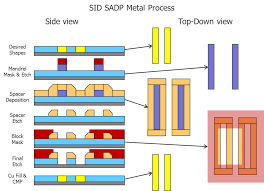
In the manufacturing industry, efficiency is a top priority, particularly when producing intricate parts in high volumes. Achieving rapid production cycles while maintaining precision ensures that operations run smoothly. Optimizing every stage of the process supports both consistent quality and operational reliability.
Liquid Silicone Rubber Injection Molding addresses these challenges effectively. This technology combines precise material control and rapid curing to produce parts quickly and consistently. Manufacturers benefit from faster turnaround and reduced waste while maintaining high-quality standards across complex applications. It supports industries where precision and repeatability are critical for operational success.
Accelerated Production Flow
The LIM process is designed to maximize output without sacrificing part quality. Automation and precise material control allow molds to be filled quickly and accurately, drastically reducing production time. This streamlined approach ensures that even complex parts can be produced reliably across continuous high-volume runs.
Key advantages:
- Automated injection ensures exact shot sizes and consistent flow, reducing variability.
- Platinum-catalyzed curing allows parts to solidify in less than a minute in many cases.
- Two-shot molding integrates silicone with plastics or metals in a single cycle, eliminating extra steps.
- High-speed ejection and mold reset systems maintain a continuous workflow without downtime.
These features collectively make LIM ideal for industries that require rapid production of complex parts with minimal human intervention.
Reduced Material Waste
Liquid Silicone Injection Molding significantly reduces scrap and material loss compared to traditional methods. The controlled process ensures nearly flash-free parts and consistent quality with each cycle. The efficient material usage lowers production costs and supports sustainable manufacturing practices.
How waste is minimized:
- Low-viscosity LSR flows evenly into cavities, leaving little residual material.
- Metered delivery maintains the correct ratio of base and catalyst, limiting off-spec batches.
- Optimized mold designs maximize cavity usage, improving yield.
- Closed-loop injection systems prevent contamination and reduce discarded material.
These efficiencies help manufacturers save both time and cost while promoting sustainable production practices.
Consistent Curing Efficiency
Curing under heat and pressure is a crucial part of the LIM process. Maintaining precise thermal profiles ensures that each part solidifies quickly and consistently, reducing the chance of defects. Uniform curing supports complex geometries and tight tolerances, ensuring all products meet strict dimensional standards.
This reliability minimizes rework and helps maintain smooth production cycles. Consistent curing improves material performance, ensuring parts retain their flexibility and mechanical properties over time. Careful monitoring of temperature and cycle duration further enhances part uniformity and reduces variability between production runs.
Optimized Shot Delivery
Precise delivery of the liquid silicone mixture is key to achieving rapid cycles and reducing scrap. Metering systems inject exact amounts of base and catalyst into the mold, preventing excess material and incomplete fills. Controlled injection pressure and speed enable consistent replication of small, intricate features. This precision ensures that high-volume production runs maintain accuracy and reduce the likelihood of production delays.
Optimized shot delivery allows the same mold to handle different part designs efficiently, increasing overall production flexibility. Adjustments to injection rate and timing can accommodate material viscosity changes, ensuring consistent results across multiple batches.
Small Part High-Volume Capability
Liquid silicone molding excels at producing small, detailed parts efficiently. Its ability to maintain short cycle times allows high-volume production without sacrificing quality or part integrity. Automated ejection and mold handling ensure continuous output, while low-viscosity LSR fills intricate cavities completely. This capability makes LIM especially suitable for medical, automotive, and electronic parts that demand precision and repeatability.
High-volume capability combined with material stability ensures reliable performance across multiple production runs. The process supports multi-cavity molds, further increasing throughput and enabling cost-effective production at scale. Short cycle times and consistent part quality make it ideal for industries that demand both speed and precision.
Multi-Material Integration
LIM supports two-shot or multi-material molding, enabling silicone to bond with plastics or metals in the same cycle. This reduces post-production assembly, saving time and material. Automated processes ensure precise placement and adhesion between materials, maintaining tight tolerances and dimensional accuracy. Integrating multiple materials efficiently allows for innovative designs and functional parts that would be difficult to produce with separate processes.
Multi-material LIM opens possibilities for combining properties, such as flexibility and rigidity, in a single finished product. This capability enhances product durability and performance, creating seamless transitions between materials. It allows manufacturers to streamline production for complex components, reducing overall costs and lead times.
Liquid Silicone Rubber Injection Molding delivers measurable advantages for manufacturers aiming to achieve short cycle times and low waste. Its automation, precise shot control, rapid curing, and high-volume capabilities allow production of complex, high-quality parts efficiently. Implementing LIM enables industries to maintain cost-effective, sustainable operations while producing reliable parts with minimal scrap. Precision, speed, and efficiency make LIM an essential solution for modern manufacturing challenges, ensuring high productivity and reduced operational risk.


